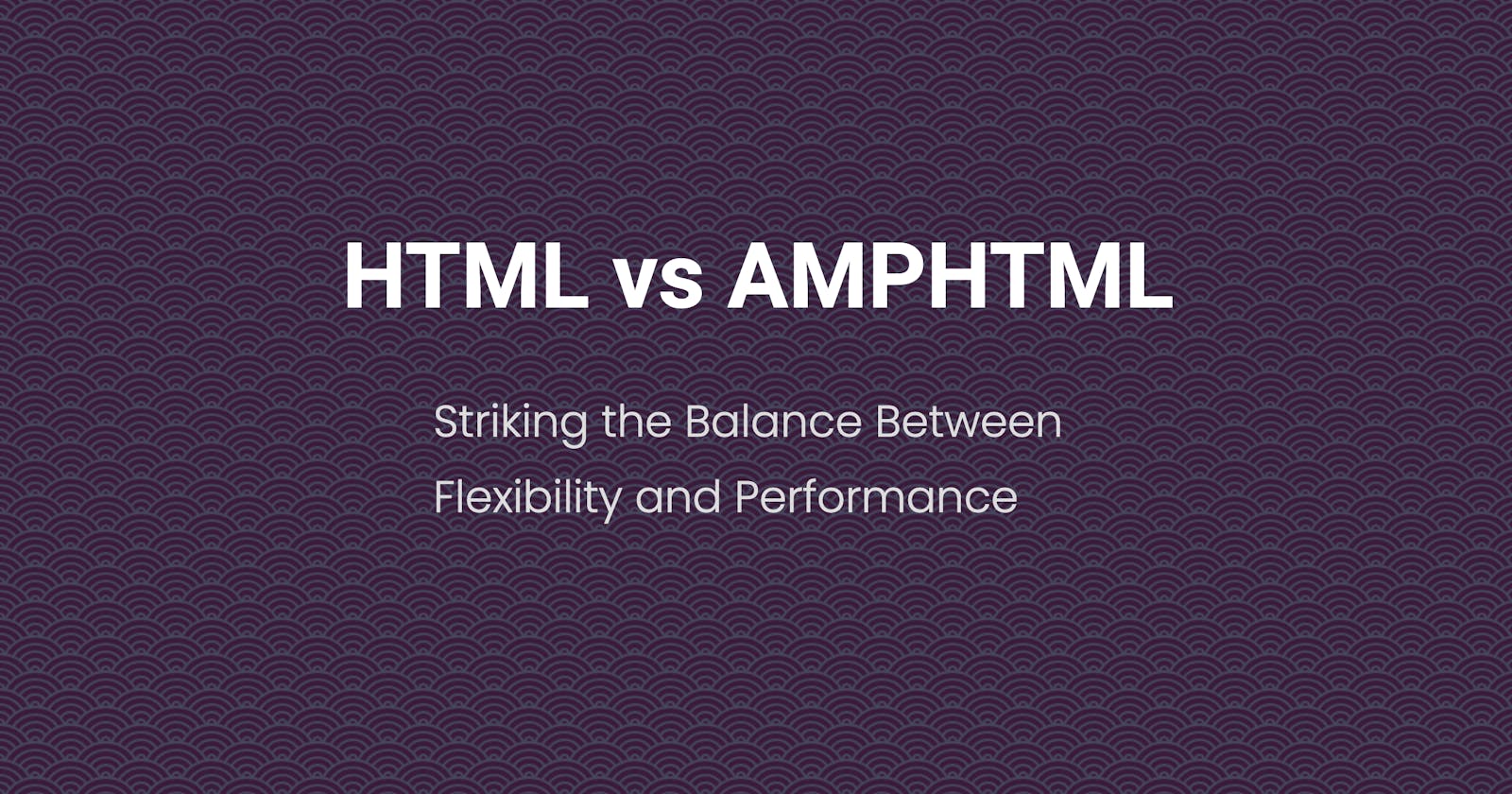In the ever-evolving landscape of web development, the quest for the perfect balance between stunning aesthetics, rich functionality, and blazing-fast performance is a constant challenge. Enter HTML and AMPHTML – two approaches that tackle this challenge head-on. HyperText Markup Language (HTML) has been the cornerstone of web development since the early days of the internet, while Accelerated Mobile Pages HTML (AMPHTML) emerged as a solution to address the growing need for optimized mobile web experiences. In this article, we will delve into the differences, benefits, and considerations of HTML and AMPHTML, helping you make informed decisions for your web development projects.
Understanding HTML: The Foundation of the Web
HTML, or HyperText Markup Language, is the standard language used to structure and present content on the web. It provides a set of tags that define the structure of a webpage, specifying how elements like headings, paragraphs, images, links, and other media should be displayed. HTML is versatile and allows developers to create highly customized and complex web pages, thanks to its support for cascading stylesheets (CSS) and JavaScript.
One of the core strengths of HTML lies in its flexibility. Developers have near-complete control over the design, layout, and interactivity of their websites. This flexibility is particularly advantageous when creating unique designs or implementing intricate user experiences. However, this freedom comes with a trade-off – as developers add more features and customization, web pages can become bloated, leading to longer loading times and potential performance issues.
Introducing AMPHTML: Streamlining for Performance
Accelerated Mobile Pages HTML (AMPHTML) is an open-source framework developed by Google with a singular focus: providing a lightweight and high-performance solution for mobile web pages. AMPHTML enforces certain restrictions on how content is structured and displayed, aiming to eliminate unnecessary elements and streamline the loading process. This results in exceptionally fast loading times, making it particularly appealing for mobile users who expect instant access to content.
AMPHTML achieves its performance gains by using a limited set of pre-designed components, optimized JavaScript libraries, and restricted CSS functionality. While this approach sacrifices some of the design flexibility that traditional HTML offers, it ensures a consistent and optimal user experience across devices. Additionally, AMPHTML pages are often prioritized in search engine results and can benefit from other optimizations provided by the AMP project.
Comparing the Two: HTML vs. AMPHTML
Choosing between HTML and AMPHTML largely depends on the goals of your web development project. Here's a breakdown of key considerations:
Flexibility vs. Performance: HTML offers unparalleled design flexibility, allowing developers to create intricate layouts and interactions. On the other hand, AMPHTML prioritizes speed and performance, making it a better choice for content-focused pages and situations where rapid loading times are paramount.
Customization: HTML enables developers to craft unique designs and functionalities tailored to specific project requirements. AMPHTML, due to its restricted components, offers limited customization but ensures a consistent experience across devices.
Speed: AMPHTML is designed with speed in mind, resulting in lightning-fast loading times. HTML pages can be optimized for speed, but they require careful implementation and optimization to achieve similar performance levels.
SEO and Discoverability: AMPHTML pages often receive preferential treatment in search engine results, potentially leading to higher visibility. HTML pages need dedicated SEO efforts to achieve comparable results.
In Conclusion: Choosing the Right Approach
HTML and AMPHTML serve distinct purposes in the web development ecosystem. HTML empowers developers to create intricate and unique web experiences, while AMPHTML focuses on delivering a rapid and consistent content presentation, especially for mobile users. The choice between the two depends on your project's priorities – whether it's robust customization and interactivity or lightning-fast performance and streamlined content delivery. In many cases, a combination of both approaches might be the ideal solution, allowing you to harness the benefits of each to create a web experience that captivates users without compromising on speed.
In the end, the right choice will depend on your project's specific requirements and goals. By understanding the strengths and limitations of both HTML and AMPHTML, you can make informed decisions that strike the perfect balance between flexibility and performance, ensuring that your web development efforts result in exceptional user experiences.

